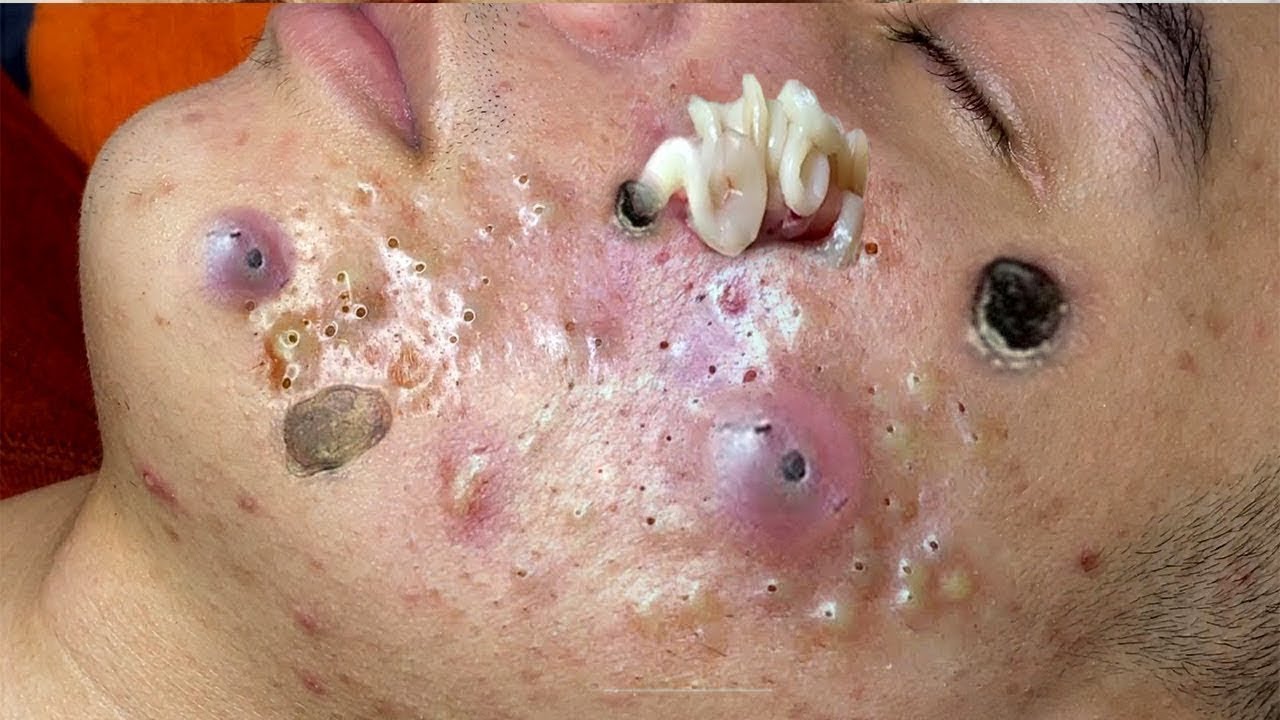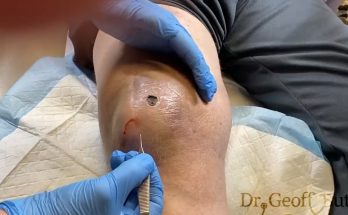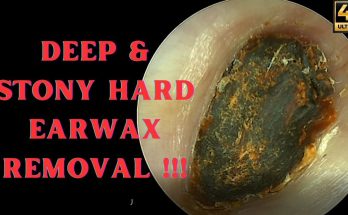Acne comes in many shapes, sizes, and colors — and sometimes, the skin condition doesn’t look like an obvious blemish at all.

Hint: Don’t pop them. Instead, stock your vanity with products that contain acne-fighting ingredients.
Acne comes in many shapes, sizes, and colors — and sometimes, the skin condition doesn’t look like an obvious blemish at all.
Take blackheads, those pesky dark-colored gunk-filled spots. If you’ve ever tried squeezing one, you’ve probably found yourself facing down an angry bump instead, and immediately regretted it.
So what is the best way to clear your skin from this type of acne?
First, let’s take a look at the causes and who is most prone to developing blackheads.
RELATED: 10 Surprising Cases of Adult Acne (and How to Get Rid of It)

What Causes Blackheads?
“Blackheads are caused by a buildup of sebum, oil, dead skin cells and possibly C. acnes (the bacteria that causes acne) that are stuck in the hair follicle,” says Nazanin Saedi, MD, clinical associate professor at Thomas Jefferson University and the department co-chair of the Laser and Aesthetics Surgery Center at Dermatology Associates of Plymouth Meeting. “When these substances oxidize in the air, the opening turns black,” says Dr. Saedi.
Acne-prone individuals are most susceptible to blackheads, but there is a genetic predisposition as well, explains Saedi.
“Hormonal influences also play a role, stimulating the production of sebum (skin oil),” says Kathleen Cook Suozzi, MD, the director of the aesthetic dermatology program at Yale Medicine and an assistant professor of dermatology at Yale School of Medicine in New Haven, Connecticut.
“Enlarged pores can also be present in individuals with severe sun damage,” Dr. Suozzi says. ”A decrease in the collagen support of the dermis surrounding the hair follicle can make the ostia (small openings) appear larger and more dilated. An extreme example of this is in the condition Favre-Racouchot, in which patients have large blackheads in areas of sun damaged skin, particularly around the eyes,” she says.
How to Prevent Blackheads on Your Skin
To keep blackheads at bay, Suozzi recommends topical or oral retinoids, including prescription medications like tretinoin or Retin-A.
“Recently, a prescription strength retinoid, called adapalene or Differin, became available over the counter for the treatment of comedonal acne,” she says. “In cases of more severe comedonal acne, patients may require treatment with oral retinoids, such as isotretinoin, or Accutane.”
Saedi adds that chemical exfoliants can also be effective, but she isn’t in favor of scrubs because they can cause irritation.
The Best Ways to Get Rid of Blackheads
If you already have blackheads, there are a few dermatologist-endorsed methods to get rid of them — and a few of them are preventive as well.
Use Products With Salicylic Acid
One go-to ingredient for eliminating blackheads is salicylic acid, a beta hydroxy acid that increases cell turnover and unclogs pores, says Saedi. Suozzi adds that the acne treatment can help dry active acne lesions because it is a mild chemical irritant.
A wealth of research suggests salicylic acid helps treat acne. That includes one study that found that using a 2 percent salicylic acid wash for two weeks led to a reduction in acne lesions.
Saedi recommends two thrifty but effective drugstore products with salicylic acid: Neutrogena Pink Grapefruit Oil Free Acne Wash and Neutrogena Gel Cleanser Acne Proofing.
If you are willing to invest a little more money for a more potent, multitasking product, Suozzi recommends Skinceuticals Blemish + Age Defense, a combination of 2 percent dioic acid with an optimal alpha and beta hydroxy acid formulation that will not only help with acne, because it reduces sebum, but also has anti-aging properties. Additionally, she is a fan of DCL Multi Action Penta Peel pads, a highly concentrated peel or chemical exfoliant.
Add a Retinoid to Your Routine
Retinoids, which are available by prescription (such as Retin-A) and over-the-counter (Differin) are a reliable method for ridding the skin of blackheads. “Retinoids work by promoting skin turnover and decreasing the ‘stickiness’ of the skin cells to prevent blockage of the follicular ostia,” Suozzi explains.
She notes that when you start retinoid treatment, blackheads, also known as comedones, may worsen as cell turnover increases against a clogged opening, causing further dilatation. This will improve with continued treatment, she says.
Saedi suggests trying an OTC product like Differin first, but if it isn’t helping, “then see a doctor for prescription strength.”
RELATED: New to Retinol? A Complete Guide to the Skin-Care Ingredient
Consider Alpha Hydroxy Acids
Alpha hydroxy acids, such as glycolic acid and lactic acid, are helpful for getting rid of blackheads as well, says Saedi, but she says that salicylic acid is better for helping unclog pores. Drunk Elephant T.L.C. Framboos Glycolic Resurfacing Night Serum and Sunday Riley Good Genes Glycolic Acid Treatment are two highly rated AHAs on the web.
Opt for an In-Office Treatment
A dermatologist can help rid your skin of blackheads. “There are in-office treatments that can help diminish the appearance of pores,” Suozzi points out. These include nonablative resurfacing (aka laser treatments) such as Fraxel laser or Clear + Brilliant laser or microneedling.
Prices vary and can range from a few hundred dollars to $1,500 or more, dermatologists say. While some people are happy with the results of a single treatment, others may need multiple sessions to achieve desired results.
The Worst Ways to Get Rid of Blackheads
Using Harsh Scrubs
It can be tempting to slough away all your dead skin in instant gratification via the help of an exfoliating scrub. While chemical exfoliators (like AHAs) can be helpful, Saedi suggests that you avoid overexfoliating with a granule scrub.
“Harsh scrubs can strip your natural oils and create more oil,” she points out. Dermatologists in general recommend exfoliating up to three times per week, depending on the product you are using and your skin type.
Doing Manual Extractions
Suozzi recommends fighting the urge to pop any pimples. “If you squeeze your blackheads, you can cause the follicle to rupture and induce the formation of an inflammatory lesion, or cyst,” she says. In other words, you can transform your blackhead into a much more serious skin condition. Keep in mind that the closer a blackhead is to the surface of your skin, the safer it is to squeeze.
Turning to Suction Devices
Tech that promises to suck sebum from pores may sound appealing, but these products may do more harm than good, Suozzi says. “This suction can be harmful to delicate facial skin and can induce telangiectasias, or ‘broken blood vessels’ to appear, particularly on and around the nose,” Suozzi explains.
RELATED: 10 Things Your Skin Is Trying to Tell You — and How to Respond
The Takeaway on Preventing and Treating Blackheads
While it might be almost impossible to resist attempting to extract that blackhead with your own two fingers, try your hardest to leave it alone.
“The best treatment is prevention,” says Suozzi. Enlist the help of a few effective ingredients — for example retinoids, double-taskers that will not only help treat the skin condition but also prevent new blackheads from forming. Or, make an appointment with your dermatologist for a professional treatment.


